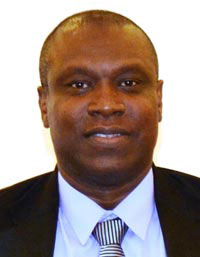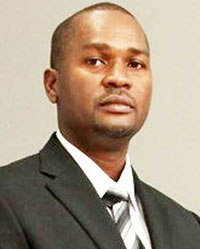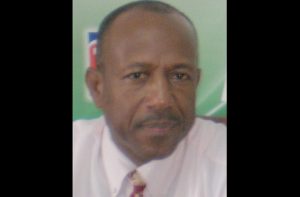ON Tuesday, April 11, FIFA president Gianni Infantino arrived in Guyana and while the primary reason for his five-hour visit was not specified, the leader of the world’s most

popular sport ceremoniously turned the sod for what will be the country’s first football stadium.
Infantino, who considers himself both Italian and Swiss, was the third FIFA boss to visit, dating back to João Havelange in 1976 and Sepp Blatter in 2001. However, unlike Havelange’s visit when the Guyana Football Federation (GFF) was then known as the Guyana Football Association, Blatter also turned the sod for football’s first home at the University of Guyana.
In 1999, Guyana, Belize, Bahamas, Nicaragua and St Lucia were listed as countries to benefit from FIFA’s new initiative, the ‘Goal Project’ (now known as the FIFA Forward Programme). However, in 2001, Blatter had stated that the building of stadiums was the responsibility of governments and subsequently revealed that FIFA would contribute some US$400 000.

The Government of Guyana, through then Minister of Sport Gail Teixeira, bluntly refused, leaving the ‘beautiful game’ with nowhere to call its own.
Back then, everything about football was shady; the GFF was under the dictatorship of Colin Klass, who had close ties to FIFA vice-president and CONCACAF head Jack Warner, but it was clear that Guyana was one of the few regional territories where football development was stagnant.
In fact, while Guyana was struggling to even find a space for FIFA Goal Project in 2001, Warner was able to successfully build at least four new stadiums in Trinidad and Tobago for the hosting of the FIFA U-17 World Cup.
In essence, it was embarrassing that a country of 1981 square miles in size was able to enjoy seeing the likes of Argentina’s Carlos Teviz and other young budding would-be stars compete for a World Cup, while the GFF could not have found a space in all of Guyana’s 83 000 square miles
The local football federation struggled for years to acquire land from the Government of Guyana until Moroccan Alami Binani made available to them a piece of land at Orangestein, East Bank Essequibo.

In 2011, Klass was suspended for his involvement in the famous ‘Cash for Votes’ scandal and the project was shelved with only a land-clearing exercise ever conducted.
Under Klass’ successor, Franklin Wilson, the GFF acquired US$500 000 funding for the resuscitation of the project after initially being allocated US$400 000. For the first time since Klass’ ascension to the helm of the game, Guyana saw a democratic change in power in 2013 with the election of Christopher Matthias.
During his (Matthias) tenure, most of which was embroiled in turmoil, the GFF discarded the Orangestein land due to the uncertainty surrounding its ownership and the distance from the capital city.
The GFF had engaged the government in an attempt to acquire land behind the Leonora Track and Field Facility, but nothing came to fruition as the PPP-government allegedly offered less than four acres which was not approved by the world governing body.
Matthias then became the first GFF president to be removed by FIFA and was replaced by a Clinton Urling-led Normalisation Committee. Football seemed stable and it was somewhat of a ‘litmus test’ given by FIFA.
Under Urling, GFF and the Eccles/Ramsburg Neighbourhood Democratic Council (NDC) signed an agreement that would see the local governing body for the sport of football get a 30-year lease for the Providence Community Centre ground.
The ground, 8.5 acres in size, sits opposite the Guyana National Stadium and Urling had said that acquisition of the land “will change the face of football in Guyana forever”; an echoed sentiment by FIFA’s president Infantino.
On November 14, 2015, Wayne Forde was elected president and the GFF boss believes that it wouldn’t be the same as it was before with regard to the Goal Project; same script, different cast but he (Forde) is optimistic of a different climax.
Dwayne Ferdinand and Home Designs and Engineering Associates won the bid ($128,982,471) for the elementary work and Green Fields was named by FIFA to execute the laying of the Astro Turf.
Marcel Gaskin and Associates will supervise the works at the facility, and while no time-line of completion was given, FIFA has indicated that the funding for the project has been approved.
Under president Infantino, FIFA member associations now have access to at least US$1.25 million per year to support running costs, training, infrastructure and facilities projects, and for development programmes and competitions such as youth leagues and women’s football.



.jpg)








